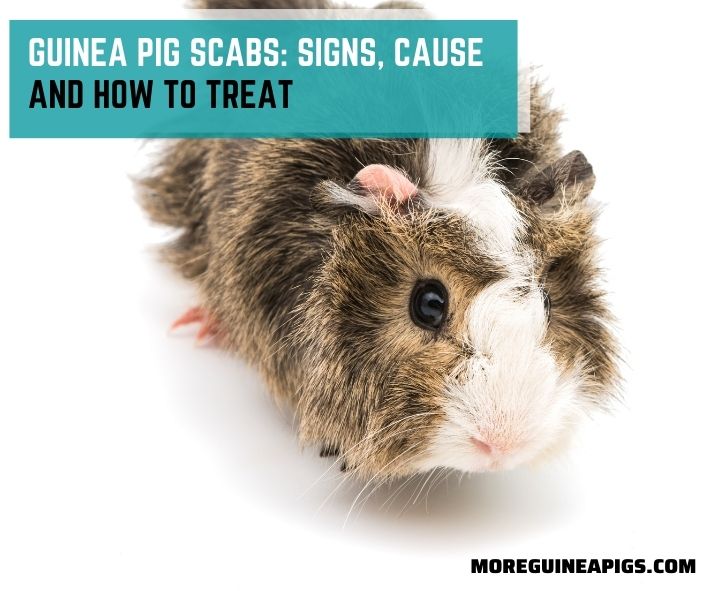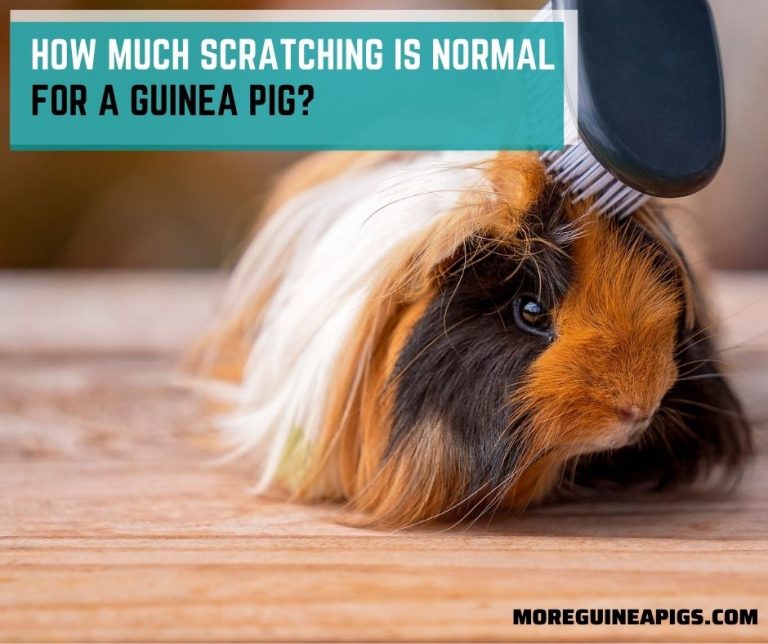Guinea Pig Scabs: Signs, Cause and How To Treat
You’re constantly wondering why your guinea pig’s skin has a circular rough area that looks itchy on its body and whether or not this is normal.
Scabs in guinea pigs may be frightening, especially for new owners. Worry no more, as this article explains what to look out for, why these things happen, and more!
Well, you’ve come to the right place! In this blog, you’ll learn all about the signs, to immediately take action, the causes of scabs on your pet, and the right way to treat the scabs!
4 Causes of Guinea Pig Scabs And How To Treat
To treat this issue, you must first understand the indicators since prevention is the key to avoiding this issue. Constant itching and flaking skin are signs.
Parasites under the skin, mite infestations, the guinea pig’s skin being sensitive and the humidity being too high, and finally, vitamin C insufficiency may be some of the reasons for these scabs. Topical creams and injections can be used to address these conditions.
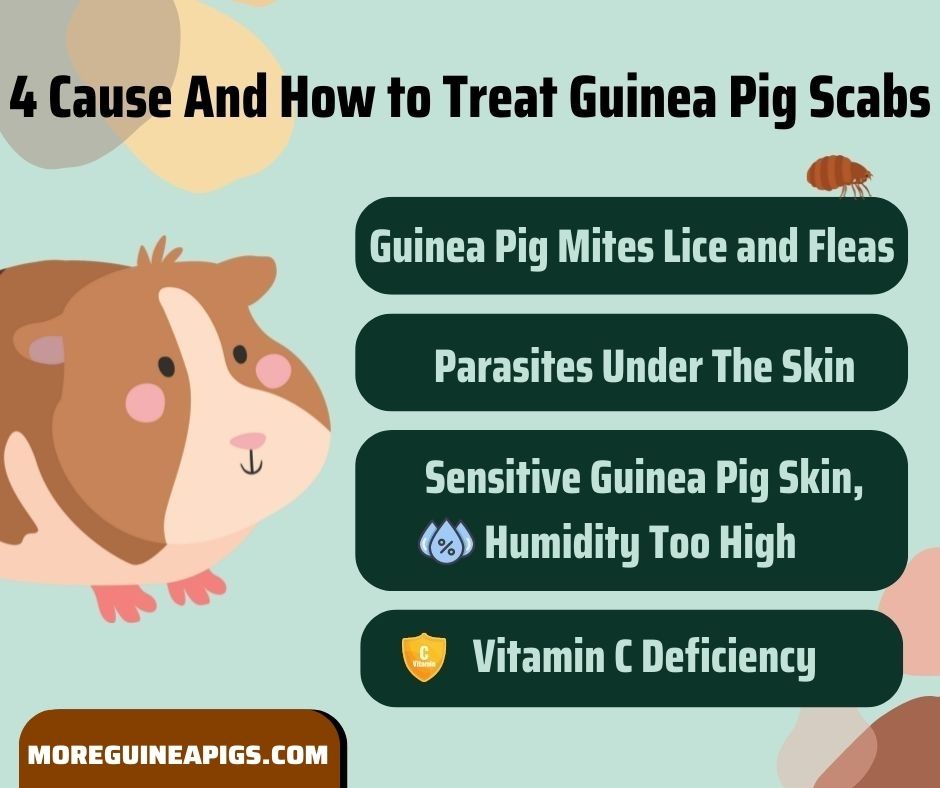
Guinea Pig Mites Lice and Fleas
Lice, mites, and fleas are frequent in guinea pigs because they are contagious and the most common difficulties that new or seasoned guinea pig owners face.
Guinea pig’s lice, fleas, and mites differ when it comes to outside look. However, all three have one thing in common, especially when it comes to guinea pigs: they all suck blood and irritate your pet’s skin.
Repetitive desperate scratching, especially behind the ears, on the shoulders, and on the sides to the point of actually making themselves bleed, as well as loss of fur on a particular area are the main signs to look out for.
Mites or fleas on the back of your guinea pigs will look like a V-shaped chewed on the fur of the back. If mites or fleas are present on the face or the ears, there will be scabby patches and unexplainable open wounds.
It’s harder to determine mites or fleas on the armpit part or body parts that are folded such as legs, and thighs, but signs usually include fur loss on that region, unexplained reasons on why they can’t gain any weight, fur loss, or red or flaky skin that usually ends up crusted.
The easiest part to check if your pig has mites or fleas is the head region. Not only is it is the most exposed and easiest to check, but the signs include dandruff, and if your guinea pig bites you, hair loss on the region, and in some cases, bleeding.
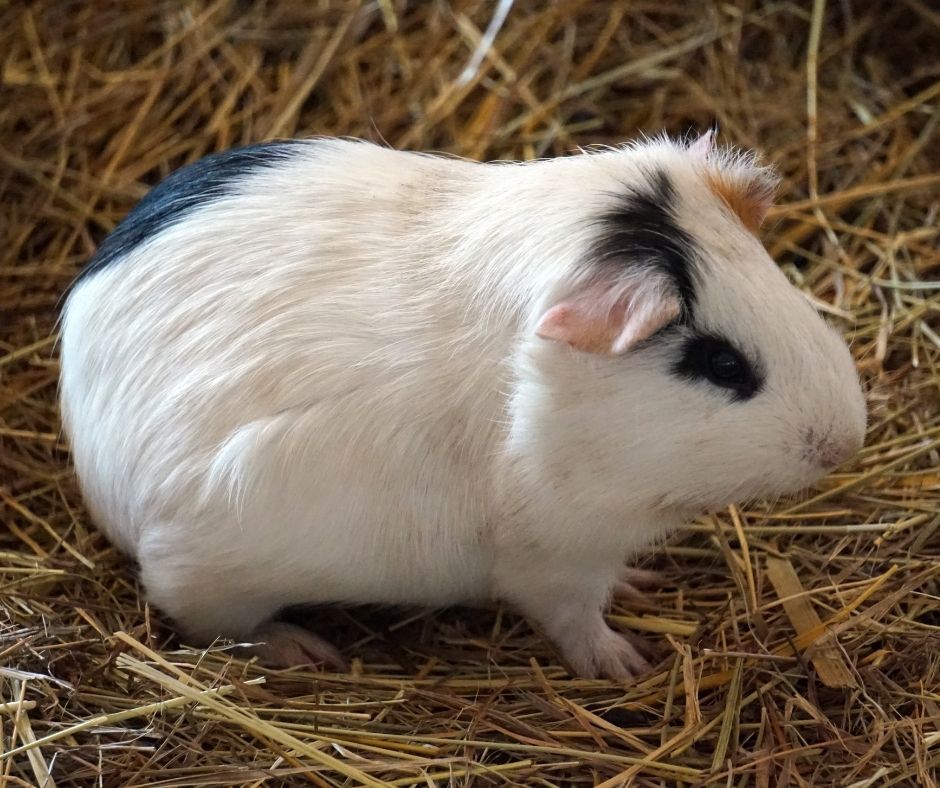
Because your guinea pigs can get lice from other guinea pigs or contaminated things, such as bedding, your guinea pigs may have lice, mites, or fleas.
A typical reason is pet shop items. Before you go to a pet store to buy something for your guinea pig, do some research about the store. It’s critical to understand more about the store’s cleanliness and the health of the animals for sale.
To fight this, clean your guinea pigs’ cages at least twice a week to preserve cleanliness, and wash them often to promote hygiene.
Fleas, mites, and lice can be reduced drastically over the course of a few days after this has been applied because good cleaning and lesser dirt are present.
Ivermectin, which can be injected by a veterinarian or given topically by the owner, is the most effective treatment. Ivermectin overdose can be fatal, so stick to the recommended dosage.
It’s important to prevent these parasites in the first place, since you may never have to deal with an itchy guinea pig again! The trick is to keep your hamsters clean and to use commercially purchased bedding with caution.
The best practice of prevention is still to have a regular check-up with the vet, and maintain a balanced diet, clean the tank regularly, change the bedding, and maintain a regular check-up schedule with your local vet store.
Parasites Under The Skin
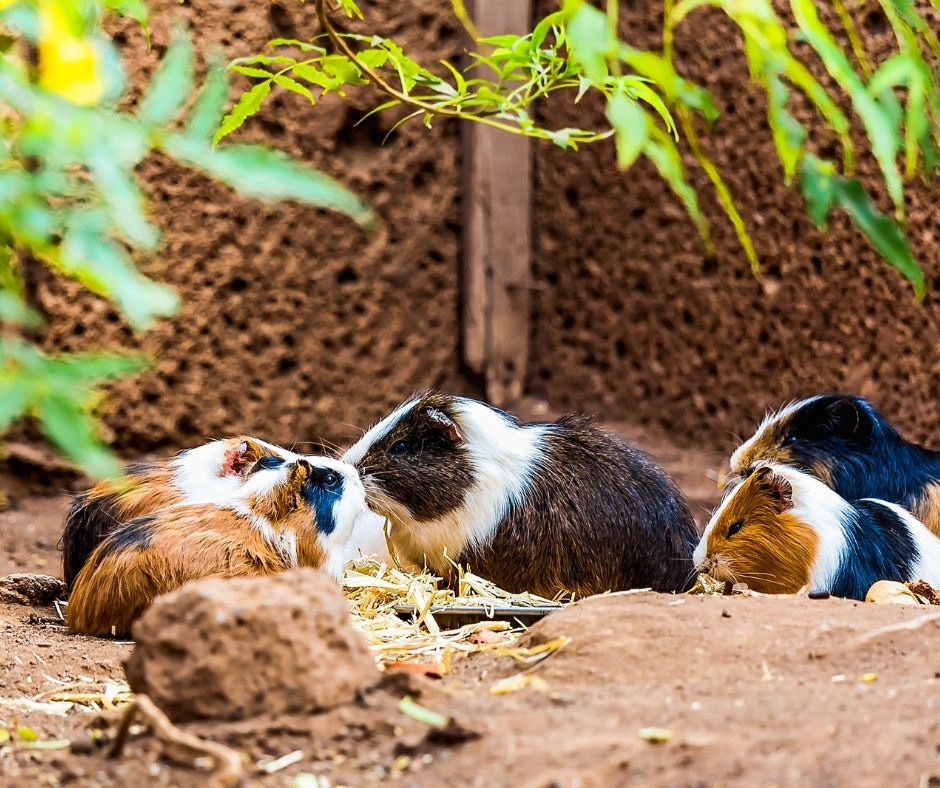
In summer, especially when temperatures are high, insects can appear which some of them are parasites. The eggs of parasites can live for days, or even weeks inside the host’s body before they hatch and start feeding.
General hair loss especially on the backside is one of the signs. But what you’ll usually notice is that they will lose weight and they’ll be scratching and itching frantically.
Guinea pigs’ health is also influenced by their clothing.
It’s a frightening scenario, for example, when you bathe your guinea pigs and dry them with a filthy cloth. It might be harmful to your guinea pigs. While dirt and dust can cause infections if the skin is broken, they cannot lead to parasites.
Some individuals like purchasing guinea pig accessories and adorning their pets with them. Lice can be transmitted from other piggies or contaminated items.
One of the best ways to treat the parasites on your guinea pigs is stick to a vet recommended medicated shampoo.
One thing you can do is to quarantine any new guinea pigs you get before introducing them to the others as said above, parasites can be transmitted on others fastly.
Beddings such as wood chips or shavings that do not have any contact with any host or carrier won’t contain or carry mites or lice. Set up a regular schedule for going to the vet for better results, and prevention of these parasites.
Sensitive Guinea Pig Skin and Humidity Too High
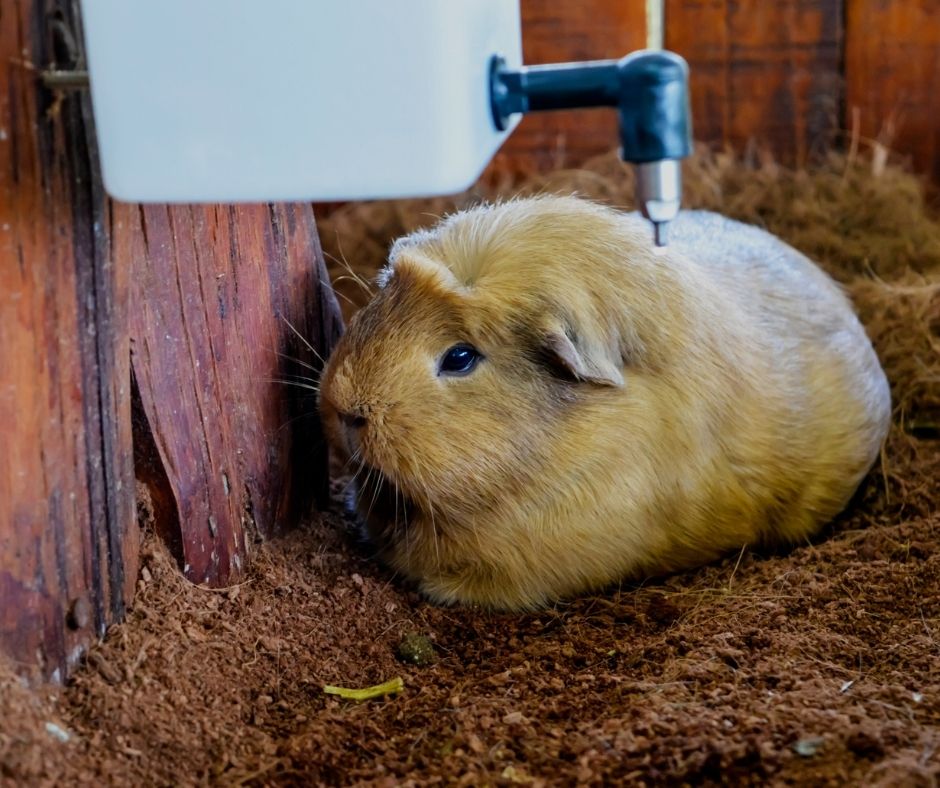
Guinea pigs are gentle and tender animals, and inflamed skin may be quite disturbing to them. They frequently bite and scrape themselves, resulting in serious wounds. In extreme circumstances, guinea pigs might have ‘seizures’ owing to skin disorders.
Some signs that this may be the reason why your guinea pigs have scabs are rough hair coat, redness of the skin, and more active than normal because they can’t stand the heat of their environment.
One of the most common causes is that you position the cage in direct sunlight or in a room with a high temperature, which is one of the most common misconceptions pet owners do.
Make sure that the temperature where the cage is is not too high and not too low. Temperatures should be maintained at 18-21° avoiding direct sunlight.
To prevent this from happening, guinea pig owners should conduct their study and have a basic understanding of the fundamental requirements before deciding to keep a guinea pig(s) as a pet.
The owner will save time and money as well as have fewer worries as a result of this! Other than research it is also smart to ask other experts or breeders, or veterinarians for guinea pig knowledge.
OASIS #80254 Vita Drops-Pure C for Guinea Pig, 2-Ounce
Vitamin C Deficiency
Ascorbic acid or Vitamin C is a really important component of their diet. guinea pigs that are fed deficient diets in this may develop symptoms as quickly as two weeks.
This deficiency greatly affects their immune system, meaning it cant fight other things like viruses, as well as bone development and skin development are also affected.
Vitamin C deficiency typically shows up as swollen painful joints, the guinea pigs may not move around very much, they may have bleeding in the gums, or around the mouth in general, lack of appetite, diarrhea, thin fur, and red skin as well.
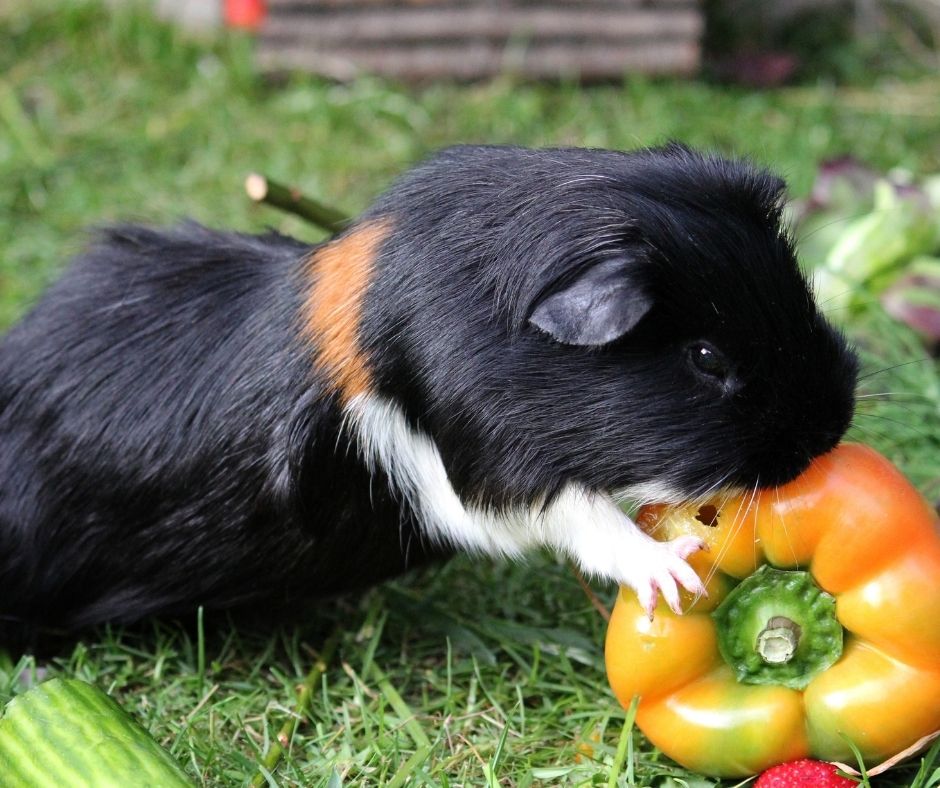
The root of this problem is that it has an imbalanced nutritional diet which is being fed to your pig! This is a big ‘oh no!’ moment!
The best source of Vitamin C for guinea pigs is fresh fruits and vegetables. Foods including red, orange, yellow, are a better choice when feeding your guinea pigs.
But always remember to not provide Vitamin C in the drinking water because it may result in guinea pigs not drinking the water, leading to dehydration.
To prevent this problem, make sure to feed your pet a variety of foods, including vegetables and fruits, to make sure that they have a balanced nutritional lifestyle. Going to the vet once every 2 months for their vitamins is also one of the preventions for this problem.
2 Tips To Prevent Scabs Guinea Pig
It is said that prevention is preferable to treatment. It’s also less expensive. In reality, avoiding future diseases and complications from existing disorders is critical to the healthcare system’s long-term viability.
So, here are two methods to keep Scabs from growing in guinea pigs.
Regular Grooming
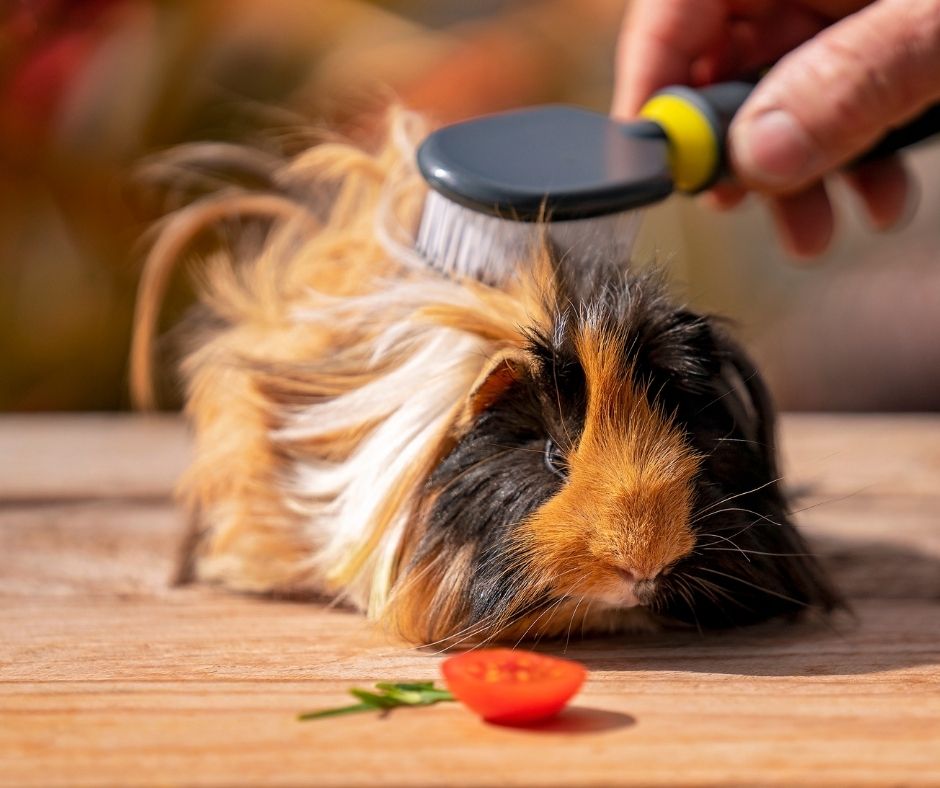
Grooming your pet is very essential because it may help you detect fleas and ticks, skin complaints, lumps, injuries, or issues with the eyes, ears, and teeth so that you can seek veterinarian treatment or take action as soon as possible!
- To start, you will need to have a small box or container, a towel or facecloth, a good pair of scissors, and a brush.
- Begin to prepare your things. The small box or container is used to raise your guinea pig to make the cut easier.
- Surround the small box or container using the towel or face cloth provided so that your pet will be comfortable.
- Start by detangling its coat by gently brushing your guinea pig. It is important to have the other hand on your guinea pig to have better control over the cut and secure your pet.
- When the brushing phase is done, simply estimate the cut at about 4 to 5 cm from below. Make sure to not rush this part as this is the most important part.
- When all hairs are evenly cut, put the Guinea pig back to its cage before cleaning everything out.
Grooming Brush Pet Hair Remover Shampoo Bath Brush
Keep Your Pets’ Environment Hygienic
Your guinea pig’s health depends on a clean living environment. Mice, lice, and fleas, as well as respiratory ailments, may all lead to high veterinary costs and, in the worst-case scenario, a shortened life for your guinea pig.
- First, take them out of the Enclosure.
- Then, start by cleaning out their water bottles and refilling them with clean water.
- Get the used bowls and clean them thoroughly.
- Remove all the waste by using gloves as their waste might contain fleas or lice.
- Remove and replace their bedding to maintain a clean environment.
- Add fresh hay on top of the bedding.
- Lastly, put the guinea pigs back in the cage.
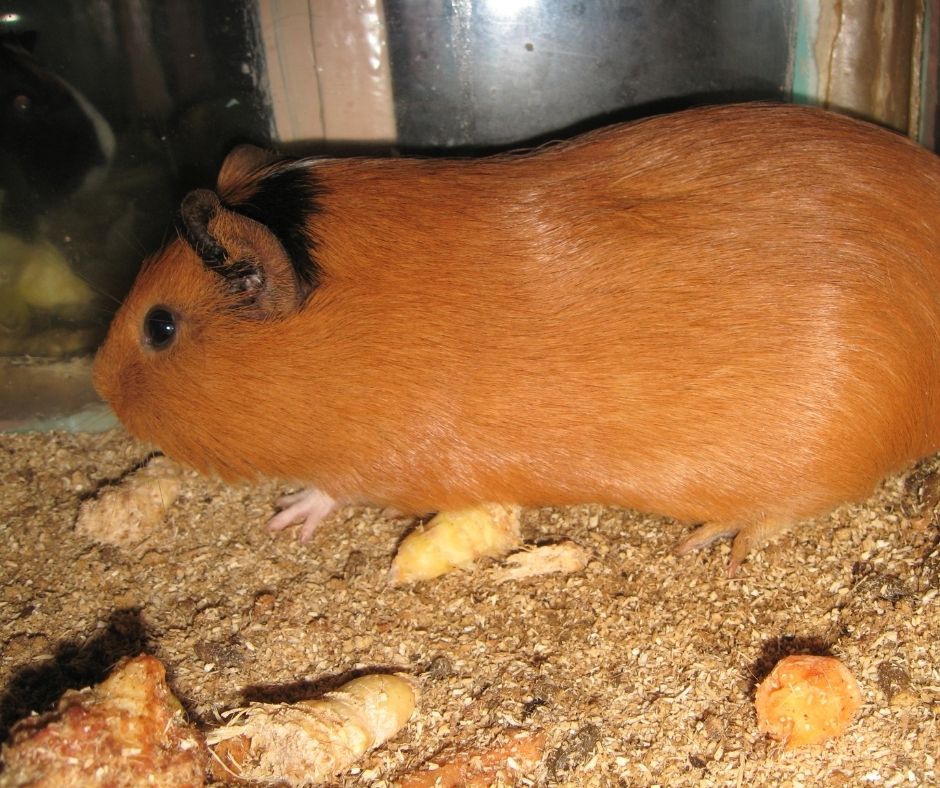
In Summary
Overall, a clean atmosphere, a nutritious diet, and proper hygiene will save you a lot of time, money, and effort!
Although scabs are a common disease in guinea pigs, they are treatable if treated promptly. Knowing what to do and what not to do may lead to a happy guinea pig and a happy owner.
